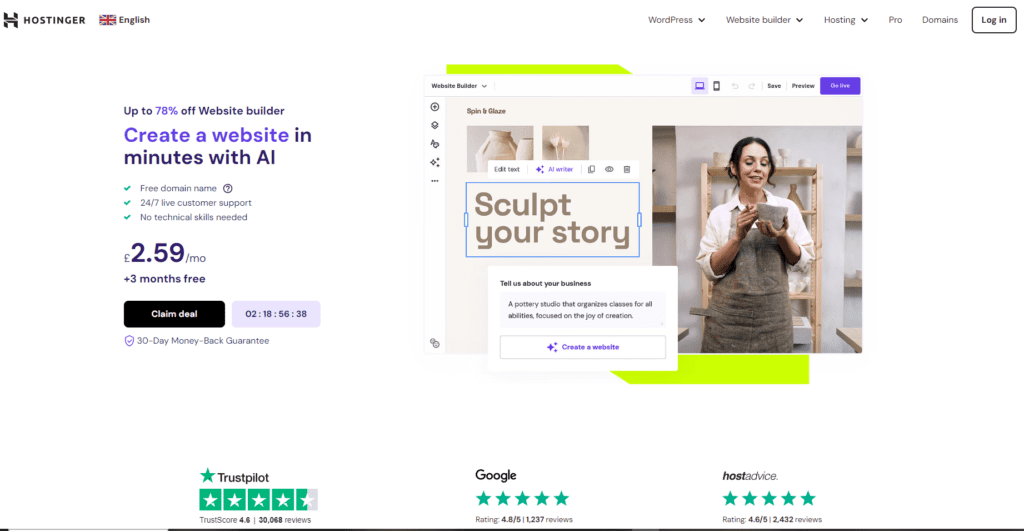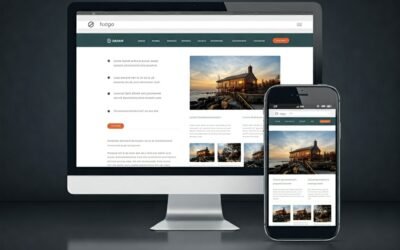
Website Optimisation Strategies
How to Improve Website Loading Speed for SEO Success
The Ultimate Guide to Website Optimisation Strategies for SEO Success will give you some great tips on how to boost your site. Website loading speed is a critical factor for both user experience and SEO.
If your website takes too long to load, visitors are likely to leave before they even see your content, which can harm your website’s bounce rate, conversions, and search engine rankings. In this guide, we’ll cover the top strategies for improving website loading speed for better SEO.
Analyse Your Website Speed
Before you can improve your website speed, you need to know how fast your website currently loads. You can use tools like GTmetrix, Google PageSpeed Insights, or Pingdom to analyse your website’s loading speed and identify areas for improvement. These tools will provide you with a detailed breakdown of your website’s loading speed, including suggestions for optimising images, compressing files, and reducing HTTP requests.
Optimise Images and Videos
Images and videos are often the heaviest elements on a website, so optimising them can have a significant impact on your website’s loading speed. Some strategies for optimising images and videos include:
- Compressing images using tools like TinyPNG or ShortPixel
- Resizing images to the appropriate dimensions
- Using a content delivery network (CDN) to serve images and videos
- Using lazy loading, which delays the loading of images and videos until they’re needed
By properly optimising images and videos, you can reduce the size of your website’s files and improve your website’s loading speed.
Minimize HTTP Requests
HTTP requests occur when a user requests a resource from your website, such as an image or CSS file. The more HTTP requests your website has, the longer it will take to load. To minimize HTTP requests, you can:
- Combine CSS and JavaScript files
- Use inline CSS and JavaScript instead of external files
- Minify CSS, JavaScript, and HTML files to reduce their size
Reducing the number of HTTP requests, you can improve your website’s loading speed.
Use Browser Caching
Browser caching allows users to store certain elements of your website, such as images and CSS files, in their browser cache. This means that the next time they visit your website, these elements will load more quickly because they’re already stored on their computer. To enable browser caching, you can add caching headers to your website’s HTTP response headers or use a caching plugin.
Use a Content Delivery Network (CDN)
A content delivery network (CDN) is a network of servers located around the world that can store and serve your website’s content. By using a CDN, you can reduce the distance that your website’s content has to travel to reach your visitors, which can improve your website’s loading speed. Some popular CDNs include Cloudflare and Akamai.
Choose a Fast Web Host

Your website’s hosting provider can have a significant impact on your website’s loading speed. If you’re using a slow or unreliable web host, your website’s loading speed will suffer. To choose a fast web host, look for one that offers:
- Fast servers with SSD storage
- A content delivery network (CDN)
- Automatic backups and updates
- 24/7 customer support
Choosing a fast web host means you can improve your website’s loading speed and overall performance.
Optimise Your Website’s Code
Your website’s code can also impact its loading speed. By optimising your website’s code, you can reduce its size and improve its loading speed. Some strategies for optimising your website’s code include:
- Removing unnecessary code and comments
- Using CSS instead of images for design elements
- Using HTML5Using asynchronous loading for JavaScript files
By optimising your website’s code, you can reduce the amount of data that needs to be downloaded by the user’s browser, which can improve your website’s loading speed.
Use a Fast Theme or Template
If you’re using a content management system (CMS) like WordPress, your website’s theme or template can also impact its loading speed. Some themes or templates are more lightweight and optimised for speed than others. When choosing a theme or template, look for one that:
- Is designed for speed and performance
- Has a clean and optimised code
- Is mobile-friendly and responsive
- Is compatible with caching plugins and other speed optimisation tools
By choosing a fast theme or template, you can improve your website’s loading speed and overall performance.
Reduce the Number of Plugins
Plugins can add useful features and functionality to your website, but they can also slow it down. Each plugin you add to your website can add extra code, HTTP requests, and database queries, which can impact your website’s loading speed. To improve your website’s loading speed, try to:
- Only install plugins that you really need
- Disable or delete plugins that you’re not using
- Use lightweight and optimised plugins
By reducing the number of plugins on your website, you can improve your website’s loading speed and reduce the risk of plugin conflicts and security issues.
Monitor Your Website Speed and Performance
Once you’ve implemented these strategies to improve your website’s loading speed, it’s important to monitor your website’s speed and performance over time. You can use tools like Google Analytics or Pingdom to track your website’s loading speed and identify any issues or bottlenecks. By regularly monitoring your website’s speed and performance, you can quickly identify any problems and take action to resolve them.

Conclusion
Improving your website’s loading speed is a critical factor for better SEO and user experience. By following these strategies, you can optimise your website’s images and videos, minimize HTTP requests, use browser caching, choose a fast web host, optimise your website’s code, use a fast theme or template, reduce the number of plugins, and monitor your website’s speed and performance.
By implementing these strategies, you can improve your website’s loading speed and rank higher in search engine results, which can ultimately lead to more traffic and conversions for your website.
If you enjoyed this post ‘The Ultimate Guide to Website Optimisation Strategies for SEO Success’ then why not check out our other posts listed below as well as the links to resources elsewhere on the web?





